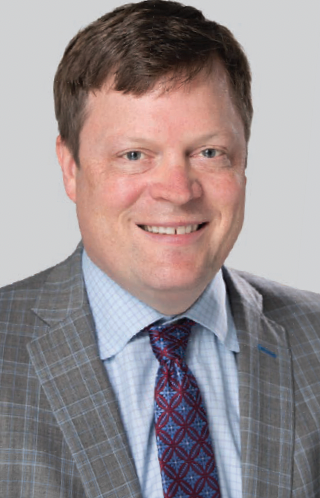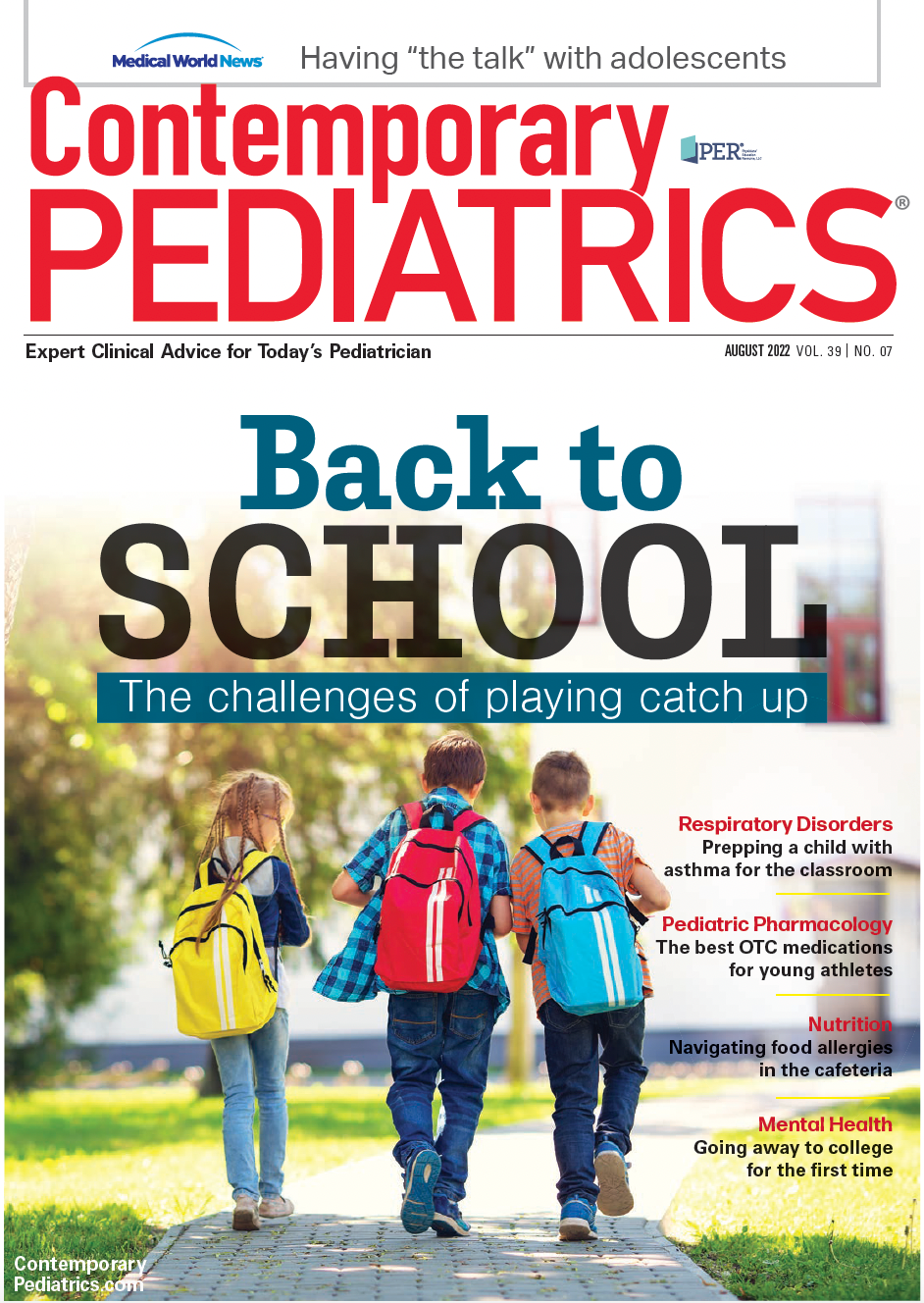What does back to school look like this year?
Many students are returning to a regular schedule for the first time since 2020. How will they fare?
It’s been more than 2 years since the COVID-19 pandemic first shut down schools across the nation. Contemporary Pediatrics® talked with Nathaniel Beers, MD, MPA, FAAP, executive vice president of Community and Population Health at Children’s National Hospital in Washington DC, and a general and developmental-behavioral pediatrician, about what this school year may look like for children and adolescents, and what pediatricians can do to help them play catch-up.
CP: It has been a couple of years since most children have had a regular in-person school year from beginning to end. What challenges await them?
NB: What we learned recently is that the impact of the pandemic on students across the country has been profound. We have seen scores in reading and math drop dramatically globally and disproportionately in minority populations. [Children in] schools that were slower to return to in-person learning showed even more of these academic losses compared with those who returned quickly. Certainly, the vaccines that are now available to children down to age 6 months increase the likelihood of being able to ensure that students can stay in class and have fewer days outside of class.
Nathaniel Beers, MD, MPA, FAAP, executive vice president of Community and Population Health at Children’s National Hospital and a general and developmental behavioral pediatrician in Washington, DC.

But it means that coming into this school year, we have another year of catch-up to be doing and figuring out how we can help students and families, and create some stability in the educational space. This also comes at a time when we have been experiencing a huge turnover in the teacher and school principal workforce, which puts increased burdens on school systems to solve the academic challenges that students are facing.
CP: What about students with developmental disabilities?
NB: This is a group that has also shown worsening disparities. During periods of virtual instruction, there was a lack of specialized instruction such as occupational therapy, physical therapy, and speech therapy, that was needed in order to comprehend and learn the material. On top of that, this is largely a group of students who benefit from structure and routine. And so even when returning to in-person instruction, the frequency at which that was disrupted because of virus exposures in the classroom or in the school created breaks in education, and that was much more disruptive to them than to the general public.
Having said that, there are some specific groups who actually excelled in those virtual spaces. And what we need to be doing is ensuring that we are looking at virtual educational opportunities and which populations actually do better. We know that there are groups of students who experience significant bullying during in-person instruction. And that virtual space created a safe space for them to learn, and they did well. We also have some anecdotal evidence of high-functioning students with autism who benefited from being able to have a more regulated environment and self-directed space of education, which allowed them to achieve things that they weren’t achieving with in-person instruction. And so we shouldn’t throw out virtual instruction completely. But we do need to understand who benefits from it, who doesn’t, and how to use it effectively during those periods of time that are going to come up. There are going to be times where the COVID-19 infection numbers are so high, there may be a need to reduce in-person instruction again for a period of time, hopefully a much more limited period. But we should make sure that the use of virtual instruction is really augmenting the learning and not creating gaps in education. That makes means making sure that students have access to broadband support, as well as the technology that they need in order to log on effectively at home, if that’s going to be where they receive educational supports.
CP: What about students who play sports or do group activities? After not being part of regular sports teams or recreational activities for more than a year, the football players, the swim teams—have any studies on how those students are doing been compiled? Is everyone jumping back in with gusto? Or are there problems in terms of getting students together for recreational group sports?
NB: There was a lot of interest in getting those activities moving quickly, because people recognize the value they had to students and their social/emotional development as well as their overall mental health. I think we certainly saw students who came back to sports and other physical activities excited about it, who then did develop injuries because of lack of conditioning. During the height of the pandemic, across the whole country, students were getting less physical activity than they had been previously by more than 20 minutes a day. There was also a disproportionate participation that existed that we need to look at as well. Children of minority families may not have been able to participate at the same rates as White families, perhaps because those families had fears about children returning to physical activities and group activities for fear of infection. How do we do reach out to those families and really welcome them back into activities as we plan for this school year? We need to start with a slow ramp up of these activities that acknowledges that not everyone had the same opportunity to maintain conditioning over the past 2 years.
CP: What can pediatricians do at this point? Do they need to advocate for additional help in the schools?
NB: There are several things that pediatricians can do to support children and their readiness for school. It’s about having conversations now about how to create a routine, so that students are ready to return instead of parents waiting for the night before school starts. Pediatricians can recommend that parents shift their children’s sleep schedule a few weeks before the start of the new year. Encourage children to do reading over the summer, play some math games on the computer….These can help create structure as well, which they need once the school year begins. It means creating a schedule where they do a little bit every week, and maybe spread that over several days during the week. Then there’s opportunity for them to have that ongoing learning and using of that brain. But children should be also having fun this summer: it has been a long 2 years of changing rules and changing spaces. And so making sure that they have a chance to unwind and visit with friends and be happy is really important to preparing for school.
Last year, teachers were dealing with huge numbers of behavioral health issues that were showing up in their classrooms in all kinds of different ways. Students are dysregulated because of lack of routine, because of anxiety and stress that they have of their own. And we need to make sure that school systems have the behavioral health supports that they need in order for teachers to be able to successfully teach students. We also need to have schools ready to acknowledge that there’s been learning loss and that students haven’t learned everything that they should have learned over the past 2 years. Make sure there’s extra support for teachers and students, make sure that it’s not just drilling students to catch up. Really think about how they are doing differentiated learning where they are accelerating students to catch up, but also acknowledge that there are some skill gaps that students need to have filled…. Advocate for classroom teachers who may need some additional instructional support beyond what is typically required.
We also can’t forget to spend time making sure that we are identifying students with disabilities. The most critical piece that pediatricians can help advocate for is going to be to make sure that there are behavioral health supports both in the school and outside of the school so that students really can be ready to learn when they’re in the building.
Nathaniel Beers, MD, MPA, FAAP, executive vice president of Community and Population Health at Children’s National Hospital and a general and developmental behavioral pediatrician in Washington, DC.

Newsletter
Access practical, evidence-based guidance to support better care for our youngest patients. Join our email list for the latest clinical updates.